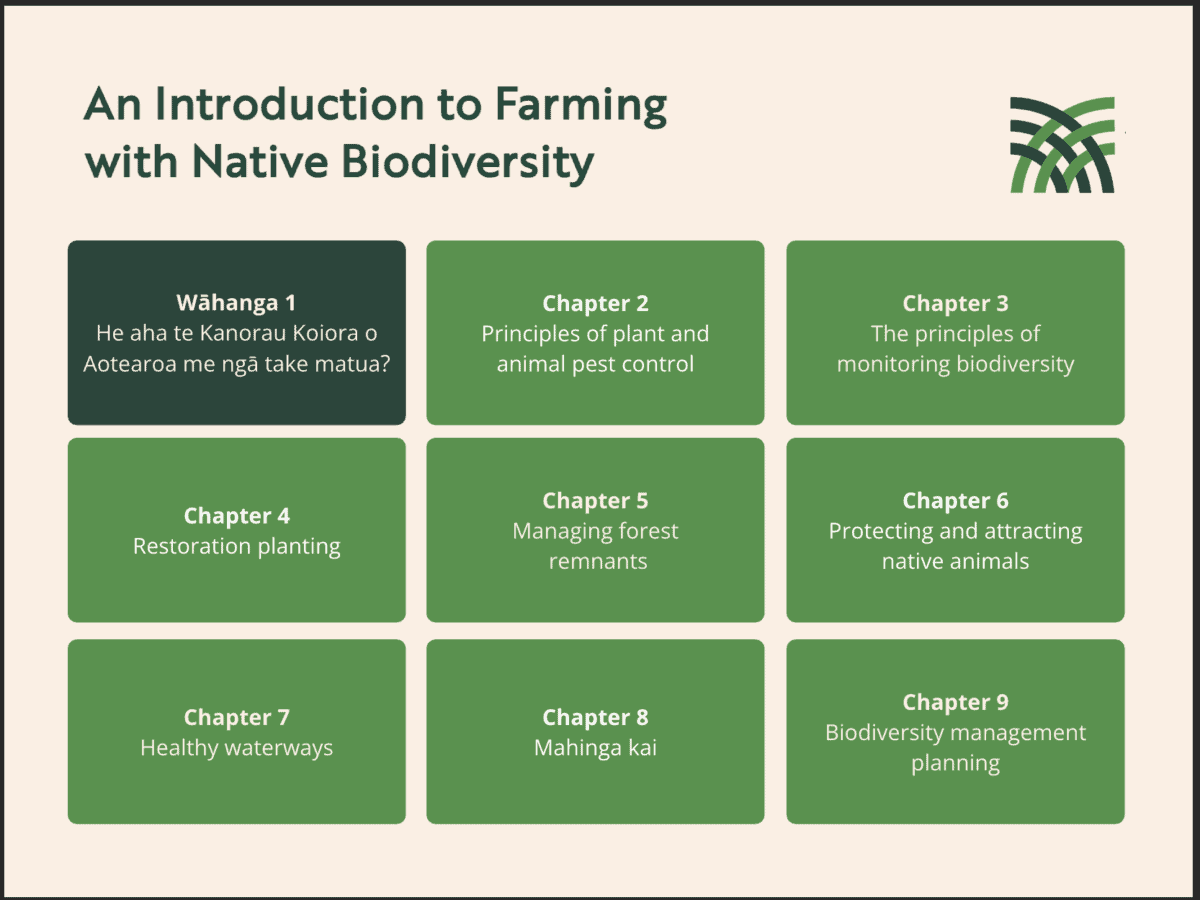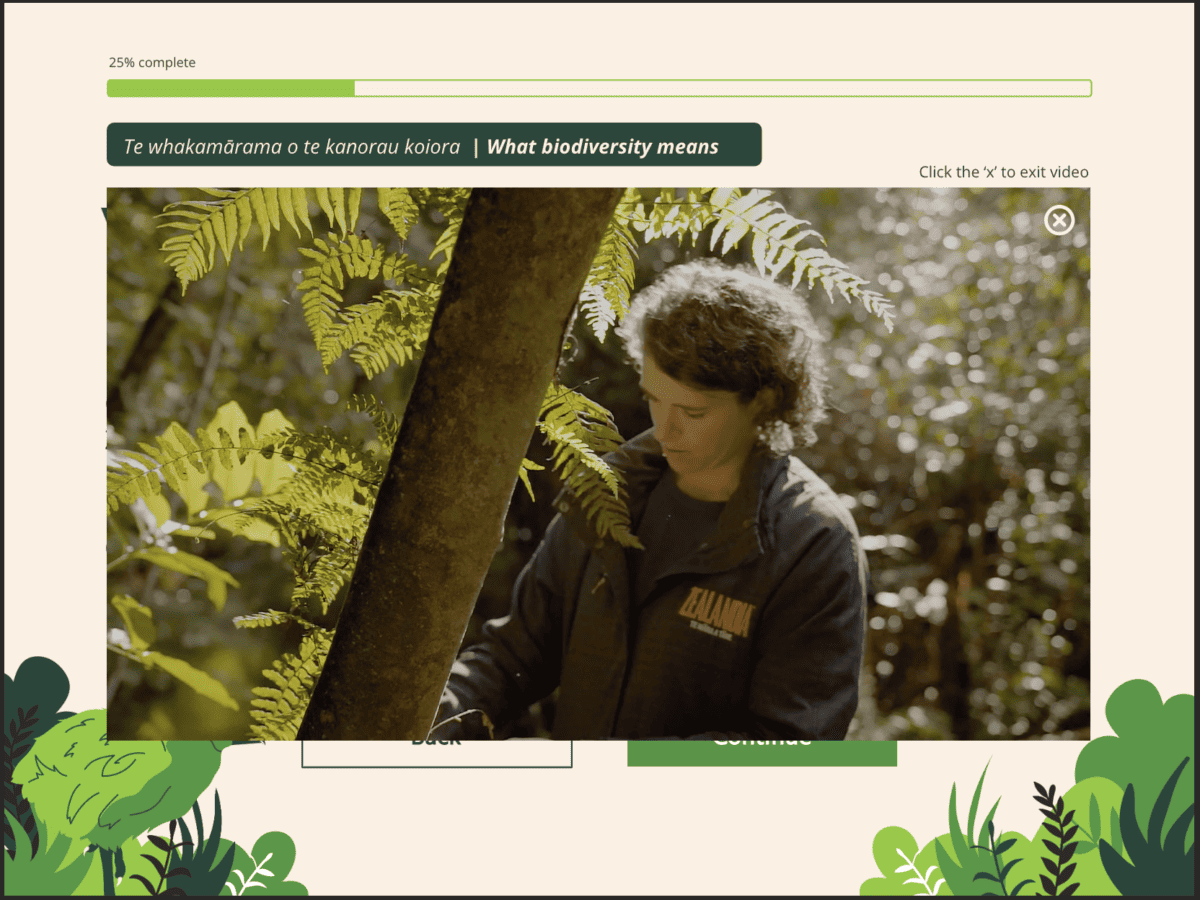How do you plan to have better biodiversity on your farm, in a way that works with your farm? This pātai, says Esther Richardson, set the stage for BioHeritage-funded Farming with Native Biodiversity’s pilot.
“The challenge we were working with,” says Esther, project lead for the pilot, “is that not everyone has an understanding of what biodiversity is, let alone how to apply it to a farming system.”
The premise of the e-learning project was to provide a baseline level of information across the whole breadth of a very broad, holistic topic.
“Saying that, we also aimed to go that little bit deeper,” says Esther.

“Part of our brief was to develop e-learning that our co-funders could use, as well as a resource that was publicly available,” says Esther.
Four categories of learners were identified for the project: from beginners, to those who already had expertise in restoring and protecting biodiversity.
“From the outset, the modules were designed for farm advisors as much as farmers,” says Esther.
“The modules are in use with the Ministry of Primary Industries’ On-farm support team. It’s with Fonterra’s Sustainable Dairying Advisors. St Paul’s Collegiate School runs the agricultural curriculum for secondary schools across New Zealand. It’s gone out to about 150 secondary schools with really good feedback.”
The e-learning modules are not just power points. StudioC Design’s concept is purposely inviting. Each chapter contains gorgeous illustrations and soundscapes, animations and infographics, and short snappy videos with a variety of voices. Te ao Māori principles are woven throughout the modules, with one chapter dedicated to the fundamentals of mahinga kai.

“There’s increasing discussion about the importance of biodiversity in solving the challenges of climate change. So there’s a real keenness to learn in these spaces.”
“When folks can see how it makes sense for them, and that it’s doable, so many want to be good stewards of the land,” says Esther. “They want to do the right thing.”
The e-learning modules are available through the Farming with Native Biodiversity website. You can follow this link to check them out.
Kerry Donovan Brown
Te Wiki o te Reo Māori: In te reo Māori, ‘biodiversity’ translates to rerenga rauropi. Rauropi being a living thing, and rerenga expressing variation.
